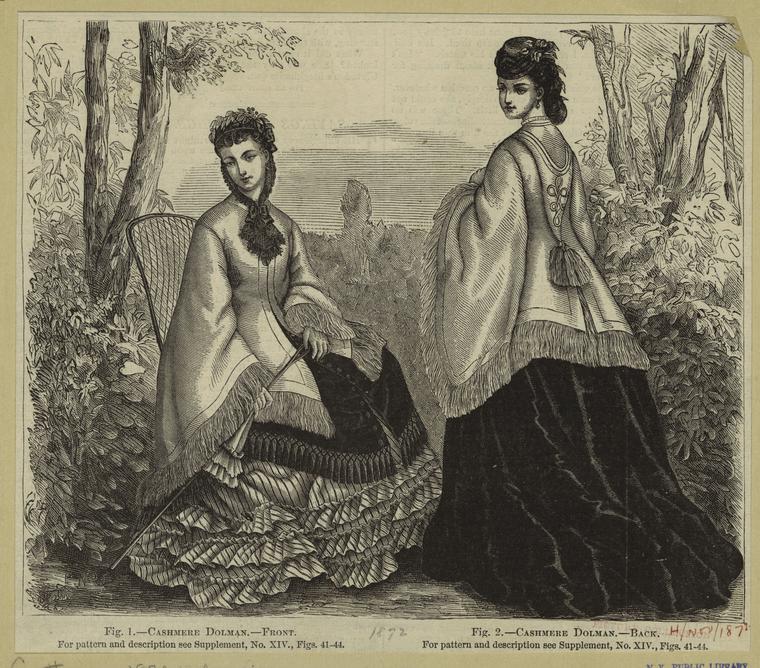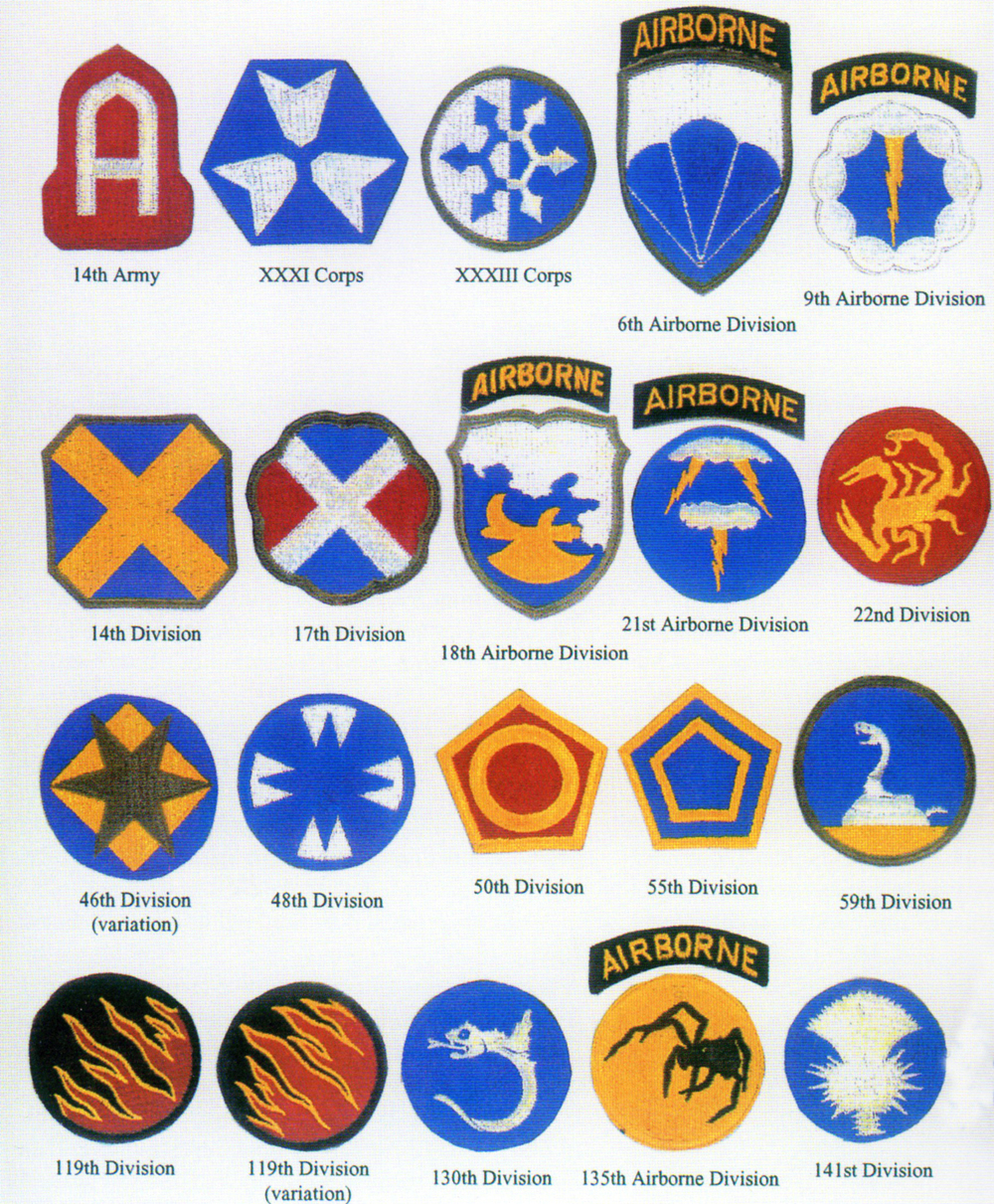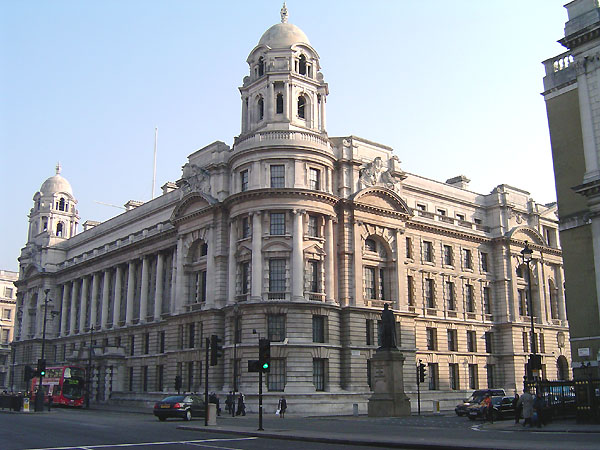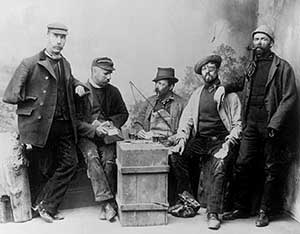|
Sir Robert Mark
Sir Robert Mark (13 March 1917 – 30 September 2010) was a senior British police officer who served as Chief Constable of Leicester City Police, and later as Commissioner of the Metropolitan Police from 1972 to 1977. Mark was the first Metropolitan Commissioner to have risen through all the ranks from the lowest to the highest (a route followed by all subsequent Commissioners), although a few predecessors had served as Constables prior to fast-track promotion. Early life Mark was born in Chorlton-cum-Hardy, a suburb of Manchester, the youngest of five children of a prosperous mantle manufacturer originally from Yorkshire. He was educated at William Hulme's Grammar School, where he was undistinguished academically, but became captain of rugby and head prefect. Police career begins When he left school in 1935 he got a job as a carpet salesman, but finding this boring, in 1937 he joined Manchester City Police as a constable, much to the dismay of his father, who considered i ... [...More Info...] [...Related Items...] OR: [Wikipedia] [Google] [Baidu] |
Commissioner Of Police Of The Metropolis
The Commissioner of Police of the Metropolis is the head of London's Metropolitan Police Service. Sir Mark Rowley was appointed to the post on 8 July 2022 after Dame Cressida Dick announced her resignation in February 2022. The rank of Commissioner of the Metropolitan Police is generally regarded as the highest in British policing. Although authority is generally confined to the Metropolitan Police Service's area of operation, the Metropolitan Police District, the Metropolitan Police also has certain national responsibilities such as leading counter-terrorism policing and protection of the royal family and senior members of the government. The commissioner is directly accountable to the Home Secretary, the Mayor's Office for Policing and Crime, and the mayor of London. History The post of commissioner was created by the Metropolitan Police Act 1829. For the force's first ten years, commissioners were known as " justices of the peace of the counties of Middlesex, Surrey, He ... [...More Info...] [...Related Items...] OR: [Wikipedia] [Google] [Baidu] |
Mantle (clothing)
__NOTOC__ A mantle (from old French ''mantel'', from ''mantellum'', the Latin">-4; we might wonder whether there's a point at which it's appropriate to talk of the beginnings of French, that is, when it wa ... ''mantel'', from ''mantellum'', the Latin term for a cloak) is a type of loose garment usually worn over indoor clothing to serve the same purpose as an overcoat. Technically, the term describes a long, loose cape-like cloak worn from the 12th to the 16th century by both sexes, although by the 19th century, it was used to describe any loose-fitting, shaped outer garment similar to a cape. For example, the dolman, a 19th-century cape-like woman's garment with partial sleeves is often described as a mantle. In English, the idiom "to take up/pick up/assume the mantle" is from the Bible, and means to take a position of authority, leadership or responsibility in a particular area, especially in the sense of carrying on for a previous figure. The most notable appearance in th ... [...More Info...] [...Related Items...] OR: [Wikipedia] [Google] [Baidu] |
Bad Oeynhausen
Bad Oeynhausen () is a spa town on the southern edge of the Wiehengebirge in the district of Minden-Lübbecke in the Ostwestfalen-Lippe, East-Westphalia-Lippe region of North Rhine-Westphalia, Germany. The closest larger towns are Bielefeld (39 kilometres southwest) and Hanover (80 km east). History In the village of Bergkirchen, which belongs to Bad Oeynhausen, a wellspring sanctuary existed in pre-Christian (Saxon) times at the local crossing of the Wiehengebirge, which was replaced in the 9th century by a church. Today's church is a subsequent building. On the church and the downhill-situated Widukind spring plates explain this further. A few metres from the church a 13th-century timbered homestead can still be found. In 753 Pepin the Short, according to the Royal Frankish Annals, stopped over ''ad locum qui dicitur Rimiae'', so that Rehme is commonly accepted as the oldest part of town. The origin myth of Bad Oeynhausen relates that in 1745 a local farmer named Sültem ... [...More Info...] [...Related Items...] OR: [Wikipedia] [Google] [Baidu] |
Captain (British Army And Royal Marines)
Captain (Capt) is a junior officer rank of the British Army and Royal Marines and in both services it ranks above Lieutenant (British Army and Royal Marines), lieutenant and below Major (United Kingdom), major with a NATO ranking code of OF-2. The rank is equivalent to a Lieutenant (British Army and Royal Marines), lieutenant in the Royal Navy and to a flight lieutenant in the Royal Air Force. The rank of Captain (Royal Navy), captain in the Royal Navy is considerably more senior (equivalent to the Army/RM rank of colonel) and the two ranks should not be confused. In the 21st-century British Army, captains are often appointed to be second-in-command (2IC) of a Company (military unit), company or equivalent sized unit of up to 120 soldiers. History A rank of second captain existed in the Ordnance at the time of the Battle of Waterloo. From 1 April 1918 to 31 July 1919, the Royal Air Force maintained the junior officer rank of captain. RAF captains had a rank insignia based on ... [...More Info...] [...Related Items...] OR: [Wikipedia] [Google] [Baidu] |
Normandy Landings
The Normandy landings were the landing operations and associated airborne operations on 6 June 1944 of the Allies of World War II, Allied invasion of Normandy in Operation Overlord during the Second World War. Codenamed Operation Neptune and often referred to as D-Day (after D-Day (military term), the military term), it is the largest seaborne invasion in history. The operation began the liberation of France, and the rest of Western Europe, and laid the foundations of the Allied victory on the Western Front (World War II), Western Front. Planning for the operation began in 1943. In the months leading up to the invasion, the Allies conducted a substantial military deception, codenamed Operation Bodyguard, to mislead the Germans as to the date and location of the main Allied landings. The weather on the day selected for D-Day was not ideal, and the operation had to be delayed 24 hours; a further postponement would have meant a delay of at least two weeks, as the planners had re ... [...More Info...] [...Related Items...] OR: [Wikipedia] [Google] [Baidu] |
War Office
The War Office has referred to several British government organisations throughout history, all relating to the army. It was a department of the British Government responsible for the administration of the British Army between 1857 and 1964, at which point its functions were transferred to the new Ministry of Defence (United Kingdom), Ministry of Defence (MoD). This article contains text from this source, which is available under th Open Government Licence v3.0 © Crown copyright It was equivalent to the Admiralty (United Kingdom), Admiralty at that time, which was responsible for the Royal Navy (RN), and (much later) the Air Ministry, which oversaw the Royal Air Force (RAF). The name 'Old War Office' is also given to the former home of the department, located at the junction of Horse Guards Avenue and Whitehall in central London. The landmark building was sold on 1 March 2016 by HM Government for more than British pound, £350 million, on a 250-year lease for conversion int ... [...More Info...] [...Related Items...] OR: [Wikipedia] [Google] [Baidu] |
Royal Armoured Corps
The Royal Armoured Corps is the armoured arm of the British Army, that together with the Household Cavalry provides its armour capability, with vehicles such as the Challenger 2 and the Warrior tracked armoured vehicle. It includes most of the Army's armoured regiments, both the Royal Tank Regiment and those converted from old Cavalry regiments of the British Army, horse cavalry regiments.Forty p. 63. In September 2024, it comprised fourteen regiments: ten Regular Regiments; four Army Reserve (United Kingdom), Army Reserve. Although the Household Cavalry Regiment (the Life Guards (United Kingdom), Life Guards and the Blues and Royals) provide an armoured regiment, they are not part of the RAC. History The RAC was created on 4 April 1939, just before World War II started, by combining regiments from the List of British Army regiments (1881)#Cavalry of the Line, cavalry of the line which had mechanised with the Royal Tank Corps (renamed Royal Tank Regiment). As the war went on and ... [...More Info...] [...Related Items...] OR: [Wikipedia] [Google] [Baidu] |
Royal Military College, Sandhurst
The Royal Military College (RMC) was a United Kingdom, British military academy for training infantry and cavalry Officer (armed forces), officers of the British Army, British and British Indian Army, Indian Armies. It was founded in 1801 at Great Marlow and High Wycombe in Buckinghamshire, but moved in October 1812 to Sandhurst, Berkshire, Sandhurst, Berkshire. The RMC was reorganised at the outbreak of the World War II, Second World War, but some of its units remained operational at Sandhurst and Aldershot. In 1947, the Royal Military College was merged with the Royal Military Academy, Woolwich, to form the present-day all-purpose Royal Military Academy Sandhurst. History Pre-dating the college, the Royal Military Academy, Woolwich, had been established in 1741 to train artillery and engineer officers, but there was no such provision for training infantry and cavalry officers. The Royal Military College was conceived by Colonel John Le Marchant (British Army officer, bor ... [...More Info...] [...Related Items...] OR: [Wikipedia] [Google] [Baidu] |
Special Branch (Metropolitan Police)
Special Branch was a unit in the Metropolitan Police in London, formed as a counter-terrorism unit in 1883 and merged with another unit to form Counter Terrorism Command (SO15) in 2006. It maintained contact with the Security Service (MI5) and had responsibility for, among other things, personal protection of (non-royal) VIPs and performing the role of examining officer at designated ports and airports, as prescribed by the Terrorism Act 2000. History In response to the escalating terror campaign in Britain carried out by the militant Irish Fenians in the 1880s, the Home Secretary Sir William Harcourt established the first counter-terrorism unit ever in 1883, named Special Irish Branch, to combat Irish republican terrorism through infiltration and subversion. It initially formed a section of the Criminal Investigation Department within the London Metropolitan Police. Harcourt envisioned a permanent unit dedicated to the prevention of politically motivated violence throu ... [...More Info...] [...Related Items...] OR: [Wikipedia] [Google] [Baidu] |
Constable
A constable is a person holding a particular office, most commonly in law enforcement. The office of constable can vary significantly in different jurisdictions. ''Constable'' is commonly the rank of an officer within a police service. Other people may be granted powers of a constable without holding this title. Etymology Etymologically, the word ''constable'' is a loan from Old French ''conestable'' (Modern French ''connétable''),p. 93b-283a, T. F. Hoad, ''The Concise Oxford Dictionary of English Etymology'' (Oxford University Press, 1993) itself from Late Latin ''comes stabuli'' ( attendant to the stables, literally 'count of the stable'), and originated from the Roman Empire; originally, the constable was the officer responsible for keeping the horses of a lord or monarch.p103, Bruce, Alistair, ''Keepers of the Kingdom'' (Cassell, 2002), [...More Info...] [...Related Items...] OR: [Wikipedia] [Google] [Baidu] |
Manchester City Police
The Manchester City Police (also known as the Metropolitan Manchester City Police and from 1842 to 1853 the Manchester Borough Police) was, from the early 19th century until 1968, the territorial police force of the city of Manchester, in northern England. Charge-books of the Manchester Division of the Lancashire County Constabulary 1842 to 1854, and summons-books 1847 to 1862, are held in the Lancashire Record Office. Sir Robert Peacock was Chief Constable of Manchester from 1898 to 1926. In 1927, Manchester City Police was the first force in the United Kingdom to employ a female police surgeon when they appointed Nesta Wells. In 1937, Manchester City Police moved into a new headquarters building in Bootle Street, designed by the Manchester City Architect, G. Noel Hill. Under the provisions of the Police Act 1964, Manchester City Police merged with the Salford City Police to create the Manchester and Salford Police. See also *List of defunct law enforcement agencies in ... [...More Info...] [...Related Items...] OR: [Wikipedia] [Google] [Baidu] |
Head Boy
The two Senior Prefects, individually called Head Boy (for the male), and Head Girl (for the female) are students who carry leadership roles and are responsible for representing the school's entire student body. Although mostly out of use, in some schools, especially when there is only one of them, they are referred to The Senior Prefect (or SP for short). They are normally the most senior Prefect#Academic, prefects in the school. The terms are commonly used in the Education in the United Kingdom, British education system as well as in schools throughout some Commonwealth of Nations, Commonwealth countries, e.g. Nigeria and South Africa. Some schools use alternative, gender-neutral titles such as school captain, head pupil/student, head of school, or they adopt the American title of student body president. Head boys and head girls are usually responsible for representing the school at events, and will make public speeches. They also serve as a role model for students, and may share ... [...More Info...] [...Related Items...] OR: [Wikipedia] [Google] [Baidu] |







